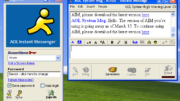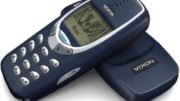Cellular signal boosters should be part of every home and office. After all, about 90% of people spend at least part of the day in an area with bad cell reception, and the cell phone is the #1 way most of us communicate.
I think one of the reasons people don’t buy cell boosters as much as they should is that they don’t understand how they work. I know a lot of people think that a cell booster couldn’t possibly work as well as we say, or that it’s some sort of special technology.
Image Courtesy Wilson Electronics
1. Reception
A big part of a cell booster is the receiving antenna. In the past, there have been some cell boosters with indoor antennas. I’ve tested several of them and let me simply say, don’t buy one. You are much better off using an outdoor antenna. If you can’t drill through the wall to mount it, you can use a window entry cable to pass the cable through an open window and then close the window. It works really well.
The outside antenna (shown in orange on the home in the picture above) is not only larger than the antenna in your phone — usually a foot or so in size — but it’s placed high up where there’s less interference from trees and buildings. This gives you the best chance of getting all the signal that’s available.
Most people don’t know that as much as 70% of a signal is lost when it goes into your home, so having that outdoor antenna is key.
2. Amplification
The amplifier (shown in blue-green in the home in the picture above) takes a weak signal and amplifies it as much as 10,000,000 times so that it is strong enough to travel through a wire to a broadcasting antenna. The amplifier also monitors the signal to make sure there’s no chance of feedback, and automatically reduces power if there’s a problem.
3. Signal Broadcast
Finally, an indoor antenna broadcasts the stronger signal to your phone. The same antenna (shown in purple) receives the signal back from your phone — after all it wouldn’t help much if you could hear the other person but still couldn’t talk. Because the indoor antenna is so much closer to your phone than a cell site is, the signal from your phone in nice and strong.
4. Retransmission
The signal from your phone goes through the amplifier and is transmitted through the outdoor antenna to the cell site. Again, because the outdoor antenna is up high, a stronger signal gets to the cell site.
The amazing thing about cell boosters is that this all happens so quickly that you can’t even tell it’s going on. There’s no lag or echo in a cell booster and the only effect you get is crystal clear calls and fast data.
Choosing a cell booster from Solid Signal
You’ll find cell boosters from the largest to the smallest at SolidSignal.com. There are choices for your car, truck, or RV, for a small home or office, or you can choose a system that will cover up to 60,000 square feet. Best of all, you can get the help you need in choosing a signal booster by calling us at 888-233-7563 or filling out the form below. Need an even bigger solution? Call us and we’ll build something designed just for you!





